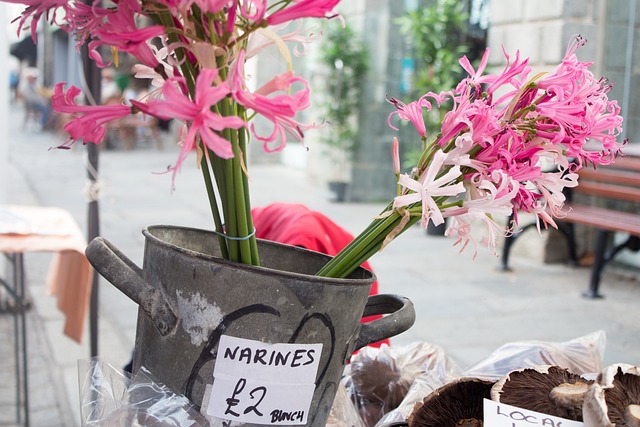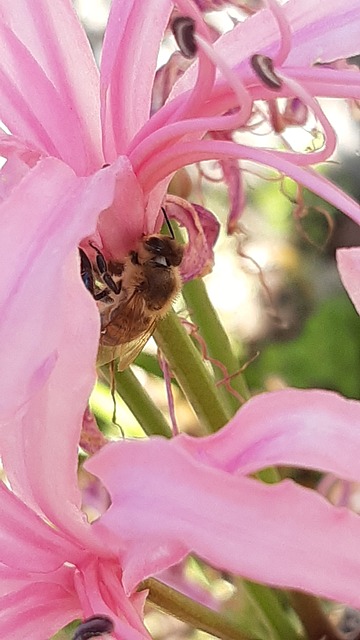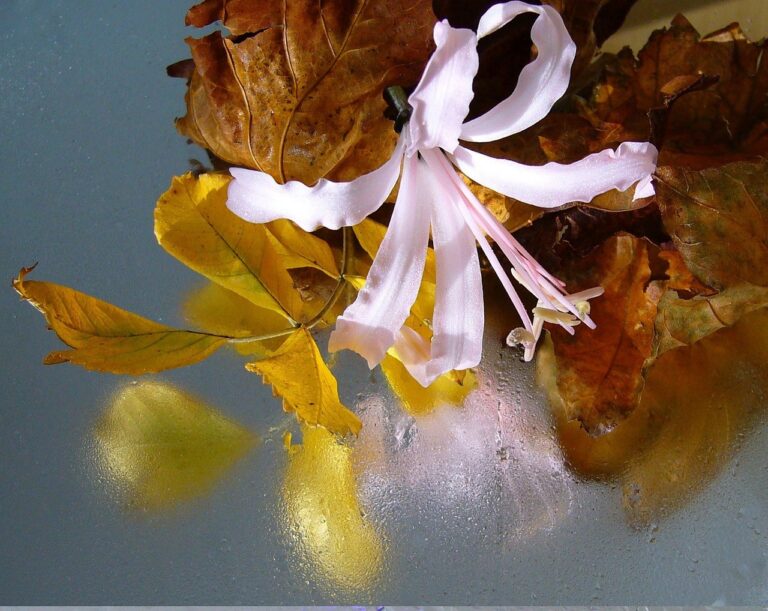Nerines may not be flowering due to insufficient sunlight, inadequate nutrients, improper planting depth, or premature disturbance of bulbs.
If your Nerine is not flowering, there may be multiple factors that you need to address. It’s essential to understand the reasons for their reluctance to bloom to take appropriate action.
So, why are My Nerines not flowering? – if you’re in a dilemma, then this article is for you.
Don’t be puzzled or disheartened! Even expert gardeners face difficulties in blooming the nerines when you’re just a novice.
The nerines, also known as spider lilies, are beautiful flowering plants that need special care. You’ll have to put more time and effort into blooming flowers into your nerine plants. But let’s first figure out why your nerine plants are not flowering!
Why Are My Nerines Not Flowering?
Unlocking the mystery behind non-flowering nerines unveils a world of critical factors that influence their bloom production. The elements are important in the flowering process, from soil conditions to bulb care.
Dive into the realm of nerine cultivation as we explore the crucial factors of “Why are My Nerines Not flowering?”
Insufficient Sunlight: Nerines require ample sunlight to produce flowers. If they are not receiving at least 6 hours of direct sunlight regularly, it can inhibit flowering.
Improper Planting Depth: Planting nerine bulbs too deep or shallow can prevent flowering. Bulbs should be planted at the appropriate depth for optimal flower development.
Nutrient Deficiency: Inadequate nutrients, particularly phosphorus and potassium can hinder flower formation. Using a balanced fertilizer can help address this issue.
Premature Bulb Disturbance: Disturbing the bulbs too early or frequently can disrupt the flowering cycle. Nerines need time to establish and develop their flowering potential.
Overcrowding: Overcrowded bulbs can lead to competition for nutrients and space, resulting in reduced flowering. Proper spacing and bulb division are crucial.
Improper Watering: Overwatering or underwatering can impact flowering. Nerines prefer moderate watering during Growth and less water during dormancy.
Lack of Dormancy: Nerines require a period of dormancy with reduced water and cooler temperatures. Skipping this phase can affect their ability to produce flowers.
Pest and Disease Pressure: Pests like aphids or diseases such as fungal infections can weaken plants and prevent flowering. Proper pest management is essential.
Young Bulbs: Young nerine bulbs might take a couple of years to establish and start flowering regularly. They need time to mature and develop.
Environmental Stress: Extreme temperature fluctuations, frost, or other environmental stressors can impact flower development in nerines.
Cultural Practices: Inconsistent care, such as irregular fertilization, incorrect pH levels, or inadequate mulching, can influence flowering.

How to Address Each Potential Issue and Promote Flowering in Your Nerines?
It can be frustrating to have beautiful nerine plants, but no blooms exist. Growing nerines successfully and ensuring they bloom requires proper care and attention. Often, specific mistakes or conditions can prevent these plants from flowering.
If you can’t address each potential issue with your nerines bulb, apply the following procedures to fulfill all the deficiencies in your plant.
Adjusting Lighting Conditions:
- Position nerines in a spot with full sunlight for at least 6 hours daily.
- Place them near a sunny window or use artificial grow lights if growing indoors.
Correcting Nutrient Deficiencies:
- Apply a balanced fertilizer with higher levels of phosphorus and potassium.
- Follow recommended feeding schedules and dosage instructions.
Implementing Proper Watering Techniques:
- Water moderately during the active growth phase.
- Reduce watering significantly during the dormant period to simulate natural conditions.
Ensuring Appropriate Planting Depth and Spacing:
- Replant bulbs at the proper depth, usually with the top third of the bulb above the soil.
- Space bulbs adequately prevent overcrowding, ensuring good air circulation.
Identifying and Treating Pests or Diseases:
- Regularly inspect nerines for signs of pests like aphids or diseases like fungal infections.
- Use appropriate organic or chemical treatments to address infestations promptly.
Additional Tips and Tricks for Encouraging Nerine Flowers
Whether you’re a budding gardener or a seasoned enthusiast, our refined techniques must help you to bloom your nerine flowers. Here are the supplementary tips, tricks and essentials for flowering in your nerine plant.
Using Fertilizer Specifically Formulated for Bulb Plants:
- Choose a specialized bulb fertilizer rich in phosphorus and potassium.
- Apply the fertilizer during the active growth phase for enhanced flower development.
Pruning and Deadheading to Stimulate Growth:
- Trim back spent flowers and stalks after blooming to redirect energy toward bulb growth.
- Pruning encourages the plant to focus on producing new blooms for the next season.
Allowing for a Dormant Period:
- Embrace the natural cycle by providing a period of reduced water and cooler temperatures during the dormant phase.
- This rest period is vital for triggering future flowering and overall plant health.
Mulching for Temperature Regulation:
- Apply a layer of organic mulch around the nerine plant’s base to regulate soil temperature and moisture.
- Mulch helps prevent temperature extremes and retains moisture during active Growth.
Avoiding Disturbance During Flower Formation:
- Refrain from moving or transplanting nerine bulbs while flower buds are forming.
- Minimizing disturbance ensures consistent Growth and flowering.
Applying Root Stimulants:
- Use root stimulant solutions to encourage strong root development and overall plant vigor.
- Healthy roots contribute to better nutrient uptake, supporting flower production.
Choosing the Right Companion Plants:
- Plant nerines alongside other perennials or bulbs with similar care requirements.
- Well-chosen companions can create a harmonious environment that promotes growth and blooming.

FAQs
How much sunlight do nerine plants require for flowering?
Nerines thrive in full sunlight. Lack of sufficient sunlight can hinder flower development.
Are nerines sensitive to soil conditions?
Yes, nerines prefer well-draining soil with good fertility. Poor soil quality can affect their ability to produce flowers.
Could improper planting depth be the reason for non-flowering nerines?
Yes, Planting nerine bulbs too deep or shallow can prevent them from flowering. Correct planting depth is crucial for successful blooming.
Is there a specific feeding regimen for nerine plants?
Providing a balanced fertilizer during the growing season can promote flower formation. Nutrient deficiencies might lead to non-flowering nerines.
Can disturbance of bulbs affect Nerine flowering?
Yes, disturbing the bulbs prematurely, especially during their dormant phase, can disrupt their flowering cycle. Avoid unnecessary bulb disturbance.
How often should Nerines be watered?
Nerines prefer slightly dry conditions when dormant and moderate watering during active Growth. Overwatering can lead to bulb rot and hinder flowering.
Do nerines require a period of dormancy?
Yes, nerines need a dormancy period where they receive reduced water and cooler temperatures. Skipping or altering this period can impact flowering.
Are there common pests or diseases affecting Nerines’ ability to flower?
Pests like aphids or diseases like fungal infections can weaken Nerine plants and impede flowering. Proper pest and disease management is essential.
Can overcrowding of Nerine bulbs affect flowering?
Yes, overcrowded bulbs might compete for nutrients and space, reducing flowering. Bulbs should be divided and spaced appropriately.
How long does it typically take for nerines to start flowering?
Nerines generally take a couple of years to establish and start flowering consistently. Be patient and ensure optimal care during this establishment phase.
Conclusion
If you want to promote the blooming of your Nerines, you must address each potential issue that hinders the flowering. So, “Why are My Nerines not flowering” is addressed as a common query from the nerine’s owner.
Our article contains the most probable reasons for not blooming the nerines flower with the troubleshooting solutions. Hopefully, now you can create a favorable environment for flowering your Nerine plant.

